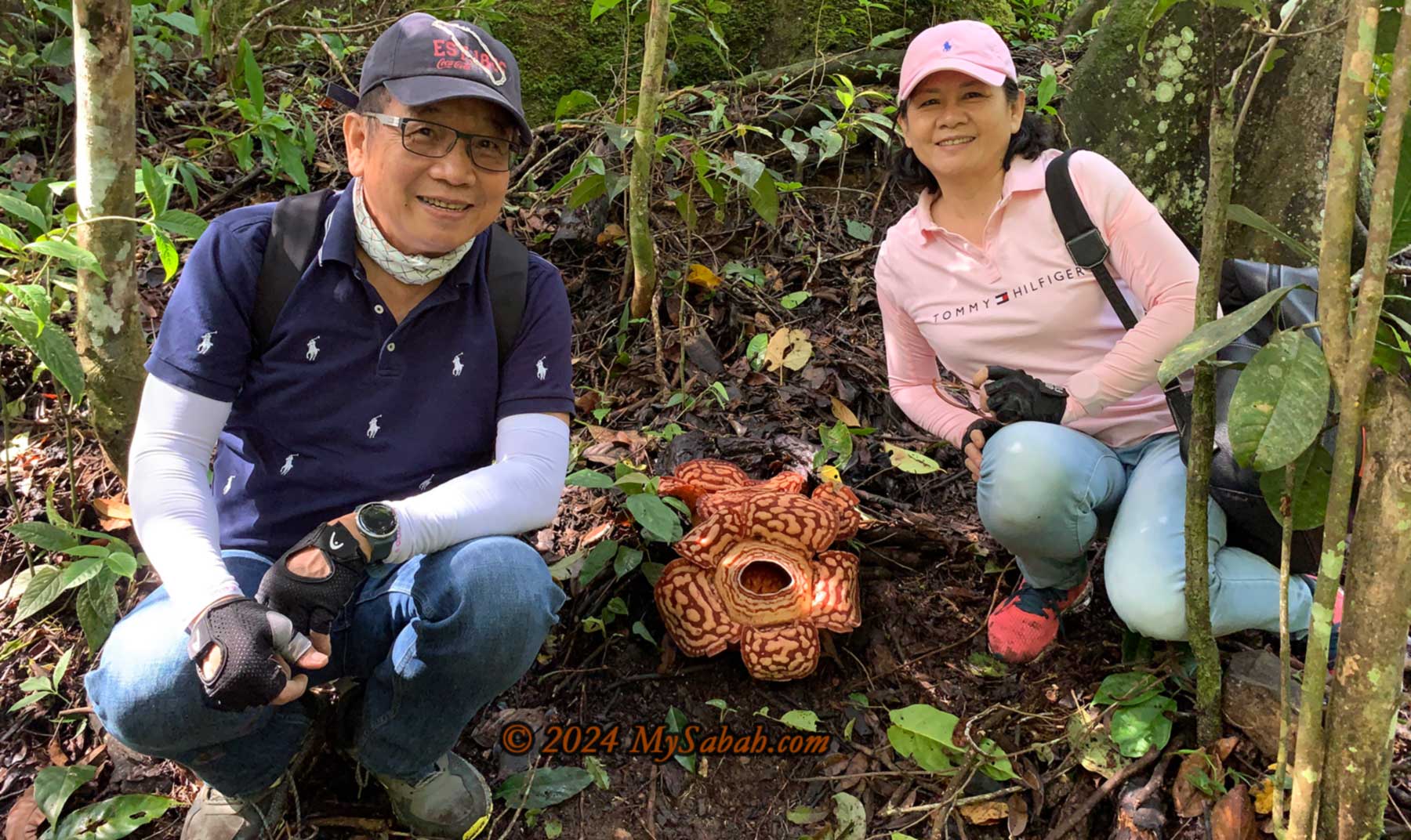I have been waiting for the blooming of Rafflesia flower. I went to Tambunan Rafflesia Information Centre in August last year, but came back empty-handed (I mean no photograph). Rafflesia is the biggest flower in the world and out of 15 species, only 3 species are found in Sabah. You also can find rafflesia flower in Sumatran, Peninsular Malaysia, Java and Philippines.
Rafflesia arnoldii species, with 90 cm in diameter, is the biggest flower in the world. Too bad it does not live in Sabah. I am tired of hearing tour operators advertise we have the biggest flower. Just to get the fact right.
Tambunan’s Rafflesia Information Centre is about 80 KM away from Kota Kinabalu city. However, you will be driving on a long and winding road on the hilly area. Unless you own a powerful 4-wheel, otherwise you will need about 2 hours to reach there. There is an exhibition hall that shows some info of rafflesia species. The centre opens at 9am daily and close at 5pm every day. So don’t be late.
Only Rafflesia pricei, about 30 cm in diameter (max. 45 CM) and second largest species in Sabah, is found in the Tambunan forest reserve about 1,200 – 1,400 Meters above sea level. Daily sighting is not guaranteed and in fact consider rare. many small brownish protuberances (bud) of rafflesia can be seen on the forest ground. The seed will need 6 to 7 months to grow! Rats and other animals would feed on this juicy bud thereby adding the rate of fatality. It is difficult than bearing a human baby.
Rafflesia is a parasite plant that hosts on the vine of Tetrastigma. Rafflesia is a single flower with no stem, leaf, or root; it is smelly like rotten meat. Rafflesia pricei is not as stinky as Rafflesia keithii. But when I get very close and sniff, I still can smell the unpleasant odor. Rafflesia relies on this smell to attract insects, such as flies, to carry on pollination.
The photo above shows the reddish-brown cabbage-like protuberances of rafflesia. As you can see, they grow on a vine. A few months later, their flower will bloom at night, showing their fleshy petals (perigone lobes) like the picture of Rafflesia price below. The whole plant is a bit soft and looks like a plastic flower. I like its beautiful white patchy pattern. I was excited because this was my first time seeing a blooming rafflesia.
Last Saturday there were two blooming of rafflesia pricei, one was 3 days old, another one 6 days. I was very lucky because one of the blooming rafflesia is only 10 minutes walk into the forest, and there was no forest leech due to the dry season now. The worst experience will be walking in the trail for an hour and get annoyed by the little blood sucking slimy leeches throughout the trekking. The extra water, raincoat and leech sock that I carried were needless.
When I was busy photographing the rafflesia, the park ranger kept on asking if I would use the photos for filming. If the photos are for commercial use and I photograph it for very long, I would have to pay RM3,000 (USD900) for such purpose. According to him, a Korean even paid RM2,500 (WOW!) to picture this magnificent flower. Rafflesia pricei is pricey to photograph then. Well, I drove here for 2 hours and paid RM50 entrance fee, there was no way I would take two shots and left. I was done with the priceless moment anyway.
Just for your info, the blooming flower will last only 1 to 5 days. On 6th day, the petals will dry up, and the whole plant will wither in the next few days. By the time you read this, the pretty rafflesia flower I saw last week should have gone. Before you visit, please call the center to see if there is any blooming. When I left, two tourist buses had come in; the travel agent was quite well-informed. When there is no blooming, the whole place is like yours.
For other two species, Rafflesia keithii, with 80cm in diameter, is the biggest species in Sabah. You can see them in Poring, Crocker Range Park, Sabah Agriculture Park (Tenom), and Lohan. If I am not mistaken, Keith, the person that discovered Rafflesia keithii, is the husband of Agnes Keith, the author who named Sabah “The land below the wind.”
Rafflesia tengku-adlinii, with 20cm in diameter, is the smallest but the rarest rafflesia that can only be found in eastern slope of Trus Madi range and Lutong Mountain (of Maliau Basin) in interior Sabah. If you are able to show me its blooming, I will not hesitate to pay you handsomely!
Due to forest clearing for logging and agriculture, sighting rafflesia depends on luck. I hope we can grow them in the nursery. Some villagers are unhappy to see Rafflesia flowers. They would remove it to prevent their land is gazetted as a protected forest reserve. I also hope Sabah Parks can create a web page that announces the blooming of rafflesia so more tourists will come to the sighting. I have no doubt the interest is strong.
Blooming Info
Sighting of blooming rafflesia needs luck. To avoid disappointment, before you visit Rafflesia Information Centre in Tambunan (see Location Map), you can check for blooming information with Sabah Forestry Department:
Facebook: sabahforestrydepartment (they will update their Facebook if there is blooming)
Tel: +60 19-5383992 (mobile), +60 88-899589 (office)
Mobile Phone: +60 11-33912760, +60 16-8878110, +60 11-26883441, +60 16-8346396, +60 11-31445985, +60 14-8694419
Email: rafflesia.info@gmail.com
| Visitor | Adult | Child | Guiding Fee |
| Malaysian | RM5 | RM3 | RM50 for 5 people |
| Foreigner | RM15 | RM7 | RM100 for 5 people |
Related posts
Biggest flower in Sabah
Twin blooming of rafflesia
Photos taken in Tambunan, Sabah, Malaysia Borneo
